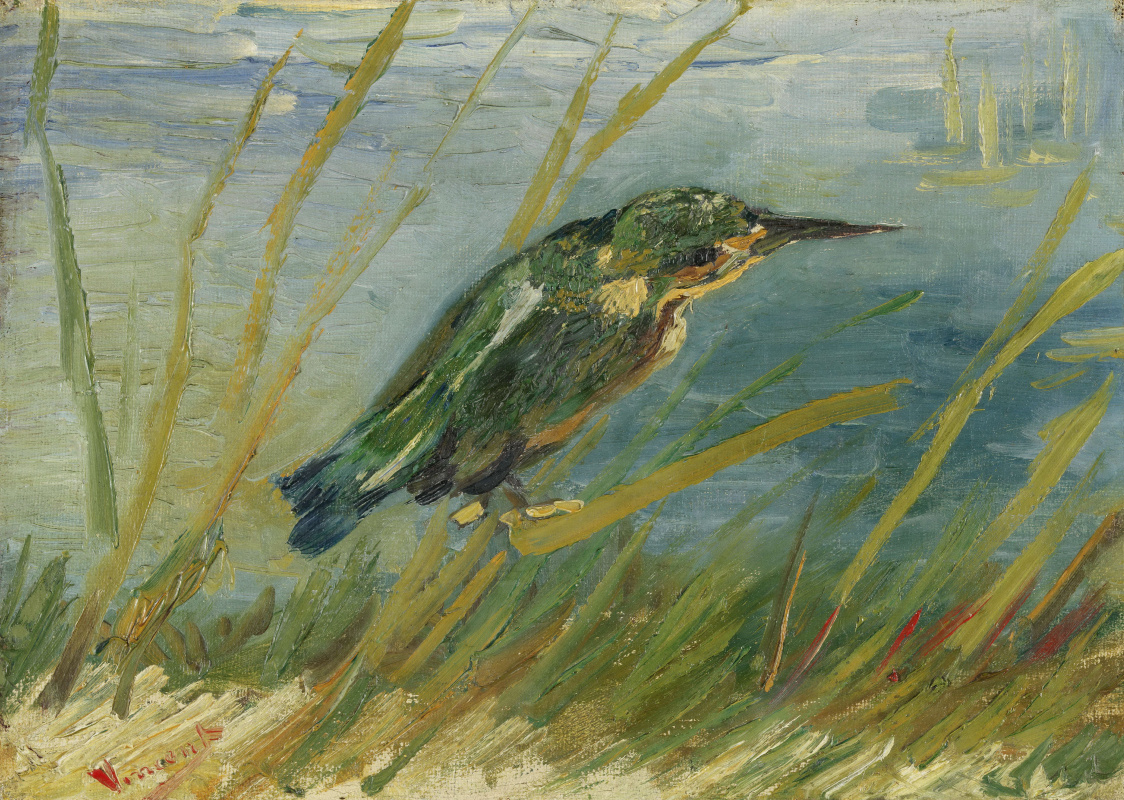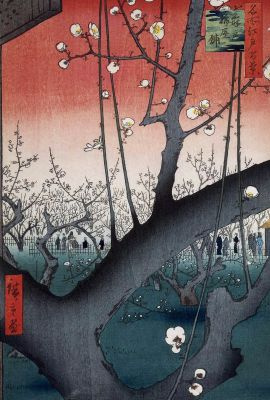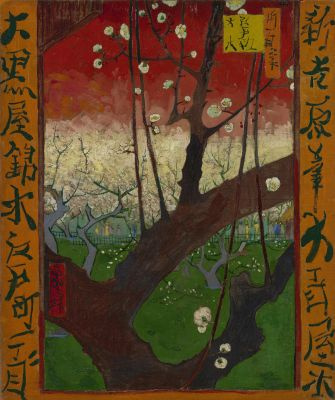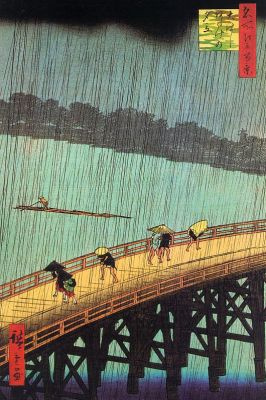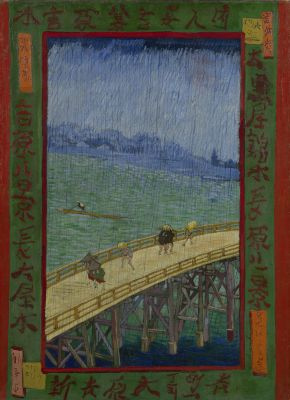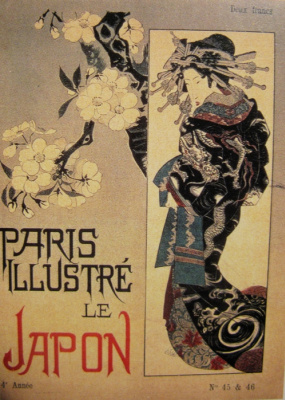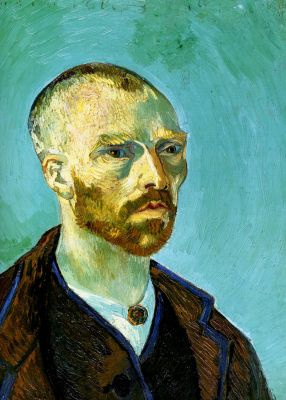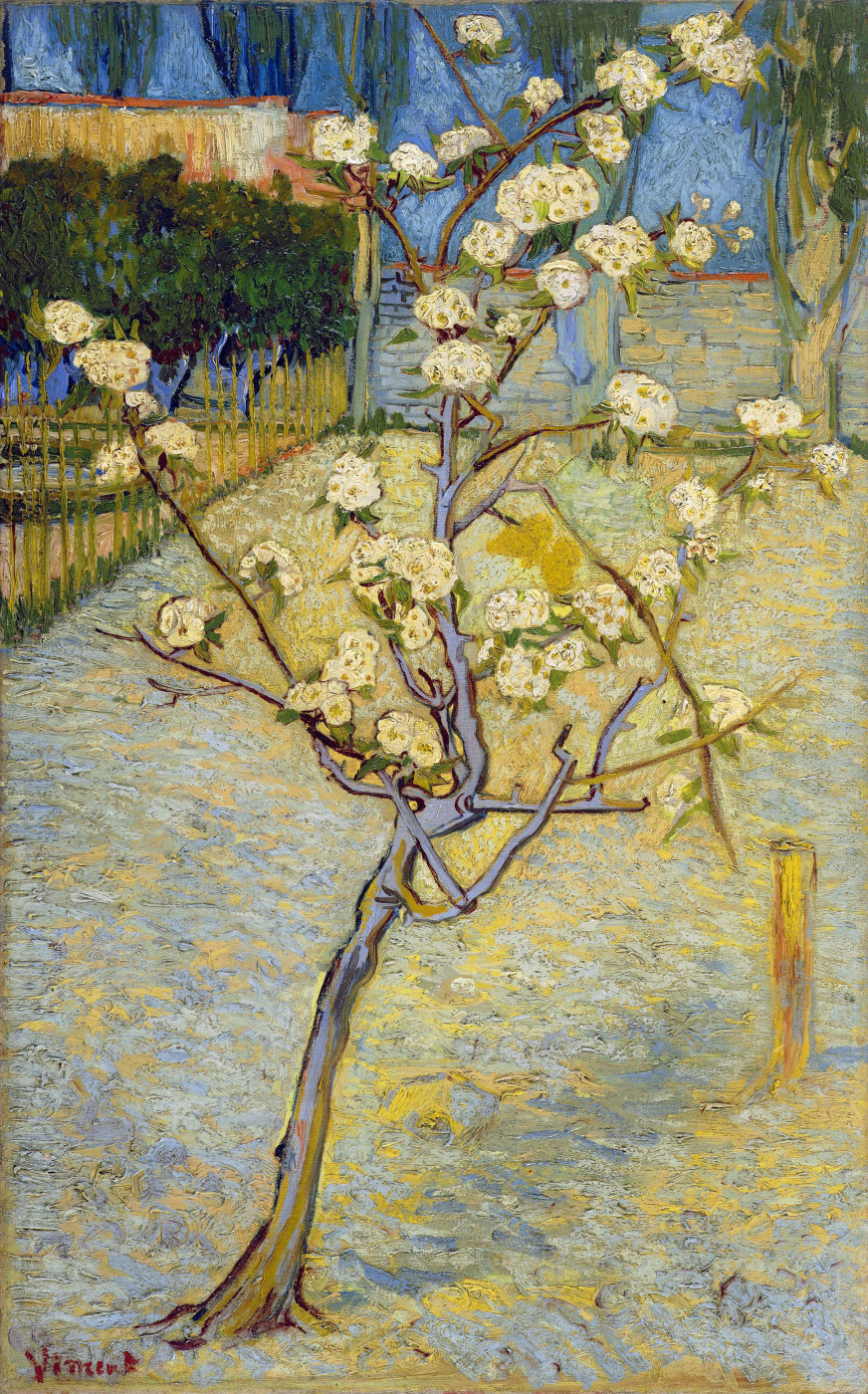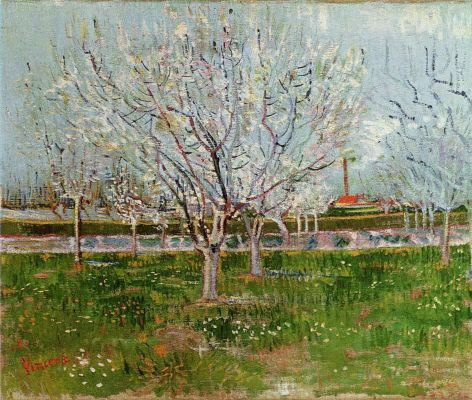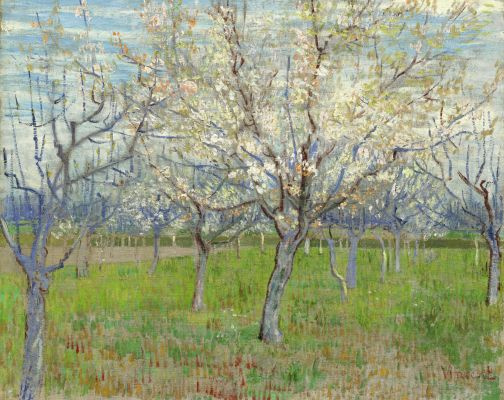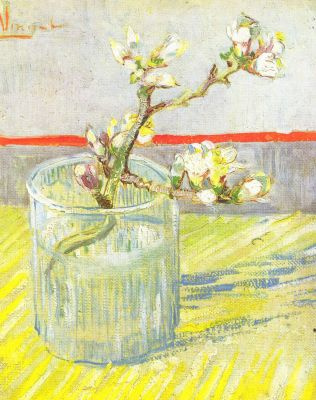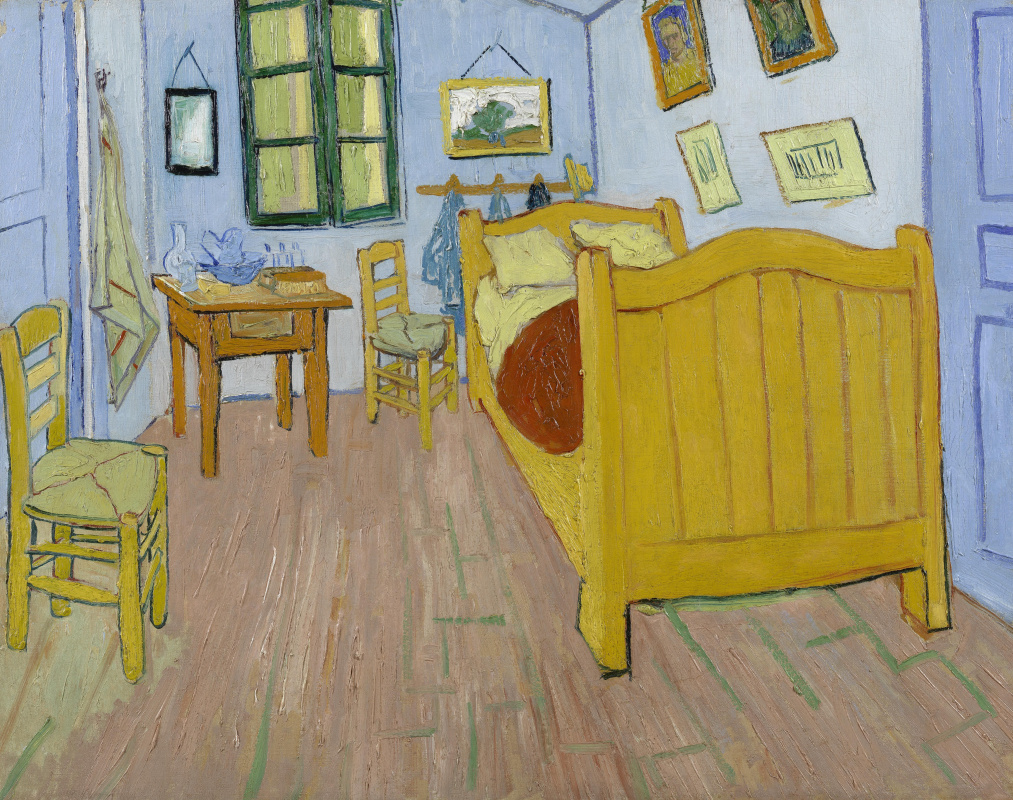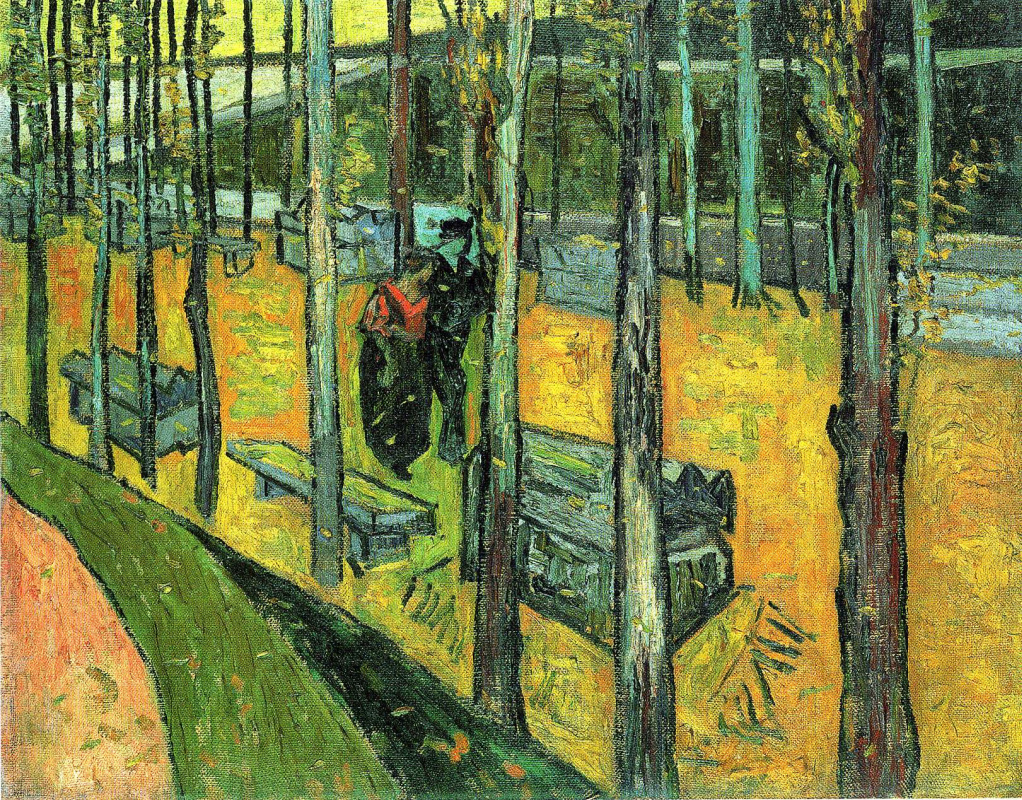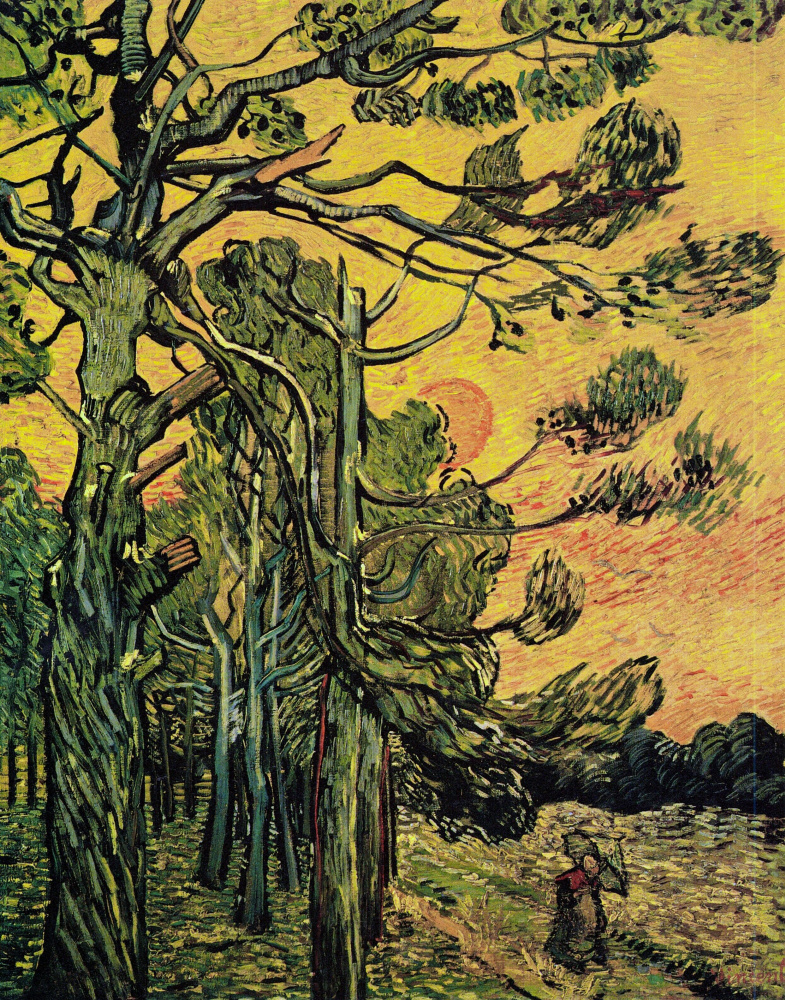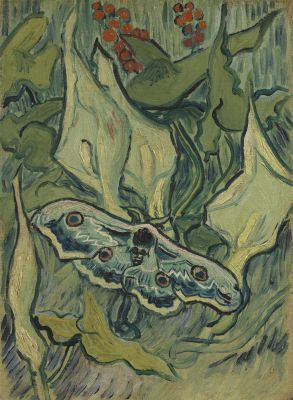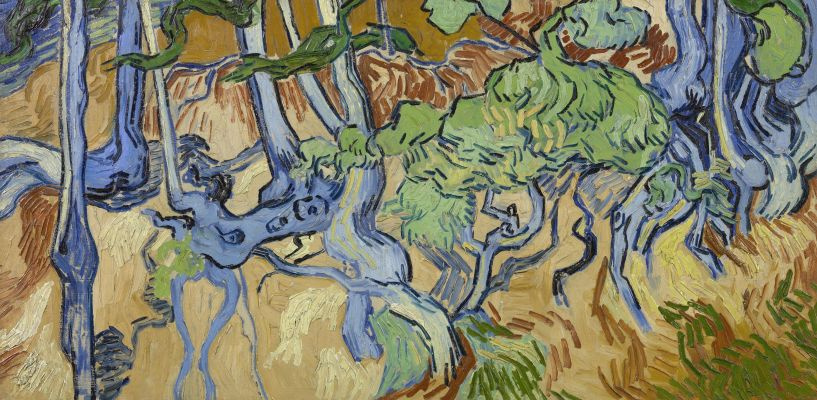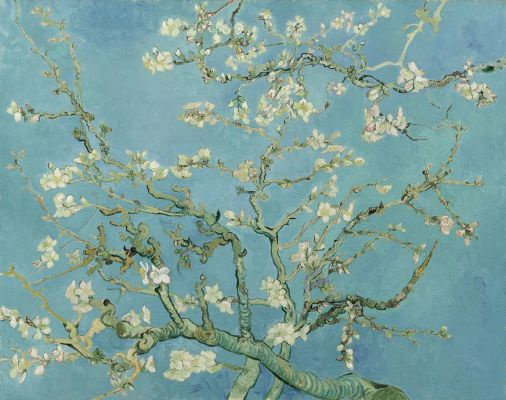Japan for Vincent van Gogh was an undiscovered country like the Atlantean continent for the other people. He read about it, collected an enormous number of small things and pictures resembling it and at the same time he was aware of he would never have a chance to see it with his own eyes. Vincent invented his own way possible only for him; obsessively and insatiably (as anything he did in his life), though, step by step for a long time he had been breeding in his mind his personal small Japan, a perfect island of simplicity and serenity. To recognize the imaginary Japan by Van Gogh, you have to scrutinize his artworks of the French period.
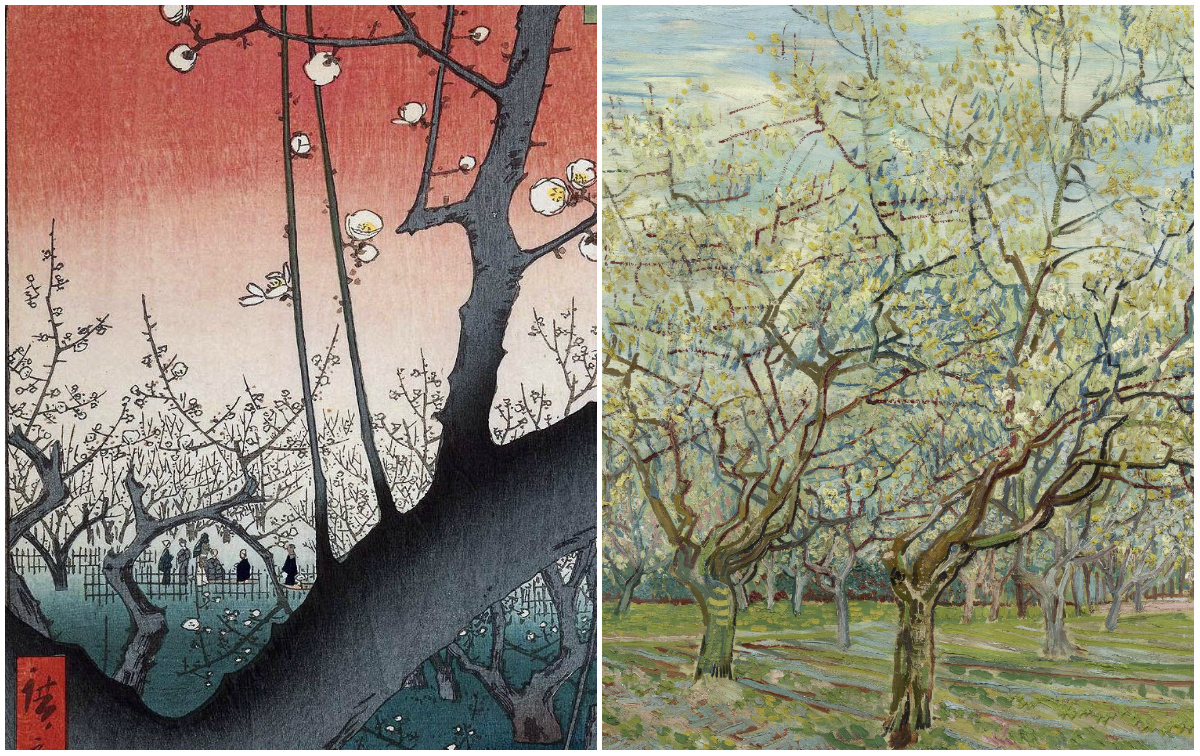
Utagava Hiroshige, The Plum Garden in Kameido (detail), 1857
and
Vincent van Gogh, The Orchards in Blossom (detail), 1888
and
Vincent van Gogh, The Orchards in Blossom (detail), 1888
That time, when Vincent van Gogh and his brother Theo lived in Paris, he was passionate about the Japanese fine art. Though, his acquaintance with Japanese wood prints, which he began obsessively collecting, had happened a little bit earlier. A few people studied the Oriental Art that time in Holland on the contrary to France, where it was at the peak of popularity. For the first time Vincent van Gogh saw the Japanese wood prints in Antwerp. In one of his letters to his brother Vincent mentioned that his studio looked rather livable mainly due to some Japanese wood prints he pinned on the wall. Some of them he found funny. He liked small women’s figures in orchards or on the bank of the river, horsemen, flowers and twisted thorny limbs of trees.
Kingfisher by the water
August 1887, 19.1×26.6 cm
When Japanese spring rushed into Vincent’s life, new themes appeared in his oeuvre. He had preferred portraits and city landscapes before and then animals, plants and household items appeared in his paintings. The Nature occupied his mind and played the most important part in his artworks. For instance, composition of his small painting depicting a kingfisher was prompted by an illustration he found in the book with Japanese artworks. The horizon was removed by the artist beyond the frames of the picture, and allowed the cane leaves crossing the space of the painting vertically from edge to edge.
The winter of 1887 he spent in copying with enthusiasm. The process included two stages. First the artist crossed the sheet of paper with squares and copied the image of some wood print. After he crossed with squares the canvas and squared down the picture contours square by square. Then he started playing with colors. Van Gogh filled the space between the contours with bright paints he put on the canvas directly from tubes. He enframed the paintings with bright colors and hieroglyphs. Only three such copies by Vincent survived (being aware of his frenetic ability to work, we could suspect dozens of them to be produced by the artist); one of them is the Flowering Plum Orchard and the other is the Bridge in the Rain after Utagawa Hiroshige and the Courtesan after Keisai Eisen.
The issue of the Paris Illustré Journal with the cover illustration the Courtesan by Keisai Eisen was released In May, 1886, and it was dedicated to the Japanese Art. Van Gogh placed his character against the bright yellow background colored with pure paints though he decorated the frame
with the image of the river bank instead of hieroglyphs. He crossed the space with the almost geometrical pattern of blue horizontal and green — yellow vertical lines. However Vincent could not but make a stylistic joke. He painted cranes and frogs in the landscape
surrounding the figure of a woman. That time the Parisians called prostitutes "grue" (a crane) and "grenoille" (a frog), which were buzzwords.
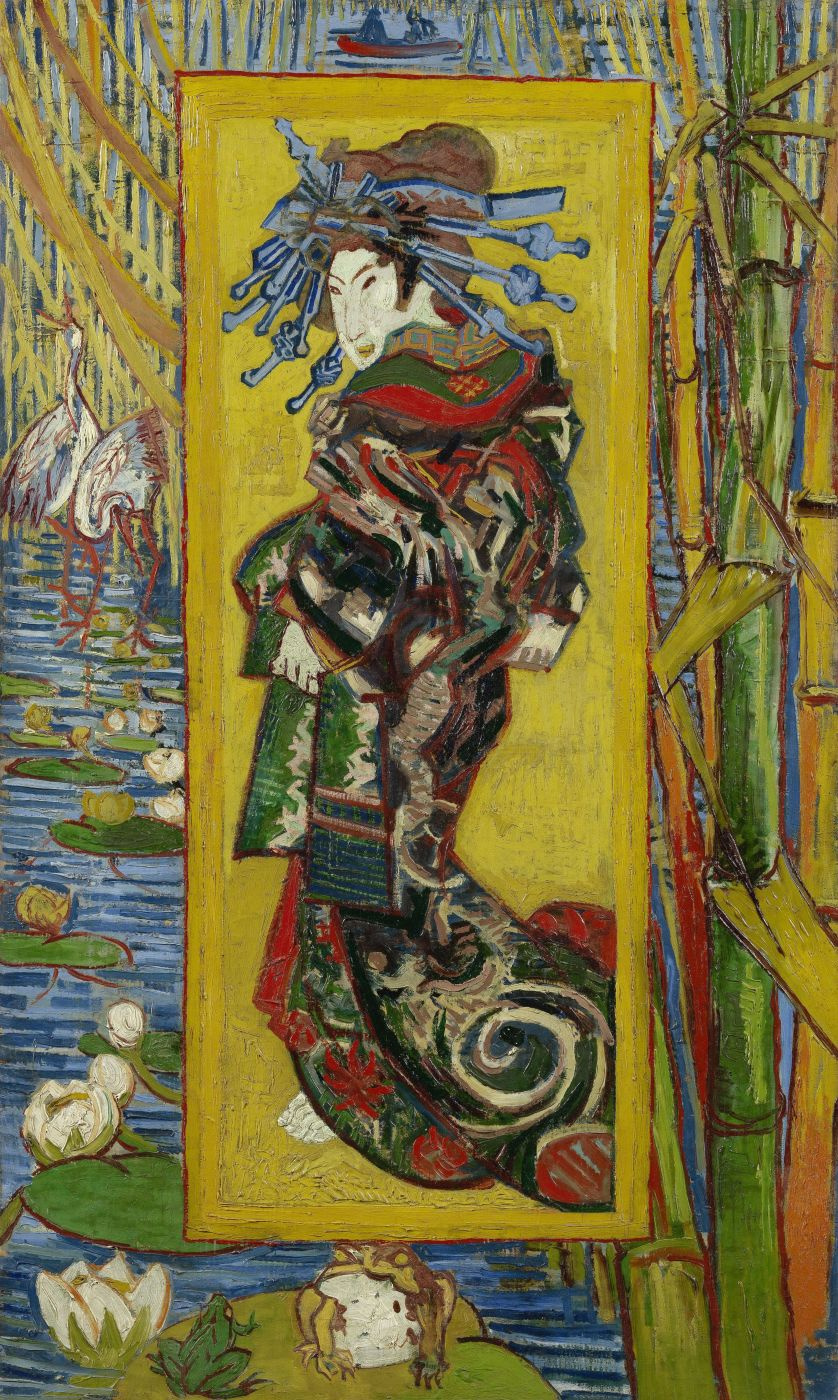
The new platform of Vincent van Gogh impacted all his artworks and portraits in particular. The same winter he produced the Portrait of Père Tanguy lacked of depth and shades; he placed the figure of the paint merchant looking like Buddha against the varicolored background of Japanese prints. About the same time he painted a new portrait of Agostina Segatori. The artist dressed his former lover in gorgeous Italian clothes against the bright brushstrokes, the colors of which resonated the ornament on the character’s skirt. Some months later Vincent van Gogh painted self portrait as a Japanese monk.
"We admire the Japanese painting and have felt its effect — all the impressionists have something in common. Then, why do not we go to Japan, to be more precise, to the place equivalent to Japan — to the South of France? I believe that the future of the new art is in the South".
(Vincent van Gogh — in translation).
(Vincent van Gogh — in translation).
On the way to Arles Vincent wrote to his brother Theo and to Paul Gauguin (the other admirer of the primitive art) that he was leaving to Japan. Even his dream about the artists commune was grounded in some way on that imagination. Van Gogh intended to found in Arles a community of artists something like a community of Buddha monks who lived in isolated communities. Moreover, Vincent sought in the South a peace, purity of the atmosphere and light color effects like in the oriental prints. All his collection he left at Theo’s claiming that he saw the world with the "Japanese eyes" and he did not need the prints anymore.
In Arles Vincent van Gogh forgot for a while his bright planes and lost himself in his "Japanese" spring producing more and more snow of blossom.
In Arles Vincent van Gogh forgot for a while his bright planes and lost himself in his "Japanese" spring producing more and more snow of blossom.
Flowering pear tree
1888, 73×46 cm
Though, later he came back to the pure hues and applanate representation (one of his most "Japanese" works in this regard could be the first version of the Bedroom in Arles). At the same time the Nature was still a keystone in the Vincent’s oeuvre, however, his painting technique had been changed. Van Gogh circled the details with dense contours of dark colors, lowered the line of the horizon or removed it beyond the canvases.
Bedroom in Arles (first version)
October 1888, 72.4×91.3 cm
Alas, the dream about "the art of future" appeared to be too ambitious for Vincent. After he had left Arles he mentioned Japan in his letters to Theo rarer and rarer. Though, clear dark contours and flats of bright colors still appeared in his late artworks. The artist likely kept his seeing of the world with "the Japanese eyes" till the end of his life.
Pine trees against an orange sky with the setting sun
November 1889, 92×73 cm
Refer to the collection of artworks "Japonism in van Gogh’s Oeuvre"
Author: Eugenia Sidelnikova
Author: Eugenia Sidelnikova






